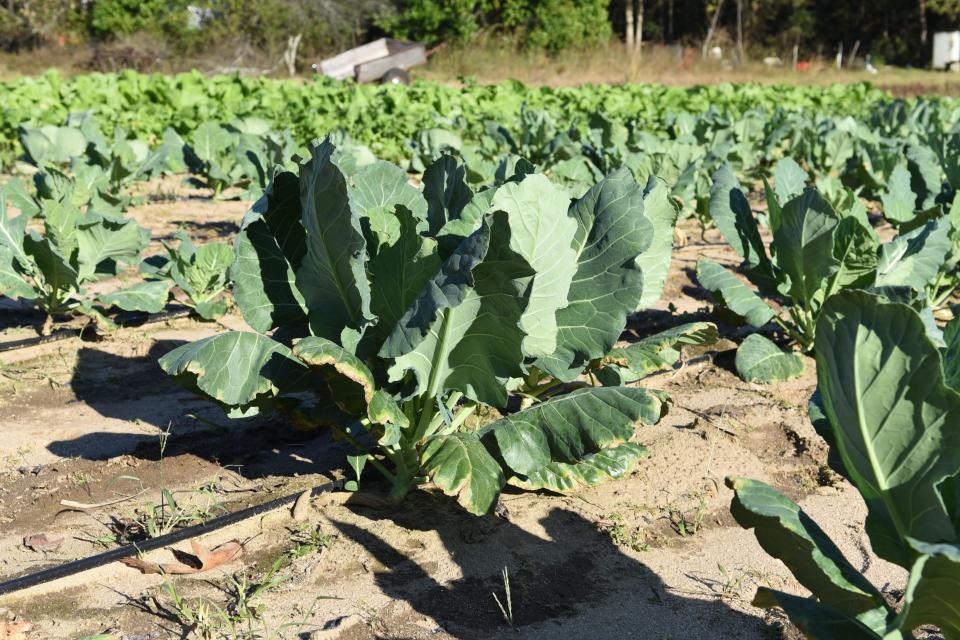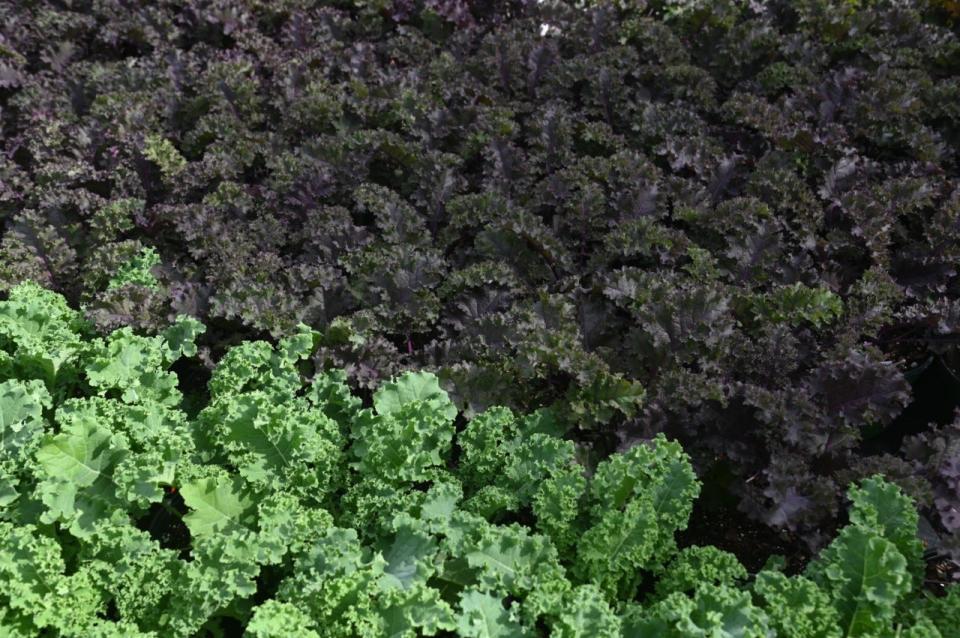Betty Montgomery: Kale and collards fresh from the garden
I was driving through the low country of South Carolina and was excited to see a large field of kale for sale. I am always looking for a chance to take a few photos and here I could not only take some pictures but could buy some kale. How fresh is that, to be able to buy kale right out of the field. I had become a fan of eating kale a few years before but the kale I buy is what I get at the grocery store and not fresh out of the field.
I stopped and took a few photos of this immaculate garden and was quickly joined by the farmer, Mr. Lewis, who came out to sell me some of his produce. He told me he had the best kale and collards and that he had been growing them for many years. I asked him several questions and suddenly his enthusiasm about winter-greens made me realize I was going to be there for longer than I had planned. He told me how he had to fight off the deer who also think he has a pretty tasty garden. He backs up to a swamp and they sleep in there in the day and come out to dine on his precious greens in the evening.
I had not always been a lover of greens. During my childhood I use to consider myself lucky that my father did not like greens. This meant that my mother never cooked them, except for collards. I had never been exposed to kale; I am not sure I had ever heard of it until my daughter-in-law tried to promoted kale to me.
Growing up in the South, I have eaten collards since childhood and to this day they are a favorite of mine, that is, as long as they were cooked southern style. Mr. Lewis said his main winter crops were kale and collards but he did grow a few other things. He also told me that both leafy greens were best after a heavy frost as the frost made them sweeter. Both of these vegetables are members of the cabbage family which also include broccoli and cauliflower. I had no idea they were kin.

I learned that kale is actually a leaf cabbage that does not form a head like cabbage. Kale plants can be green or purple. They were easy to grow as a winter crop because they could take temperatures in the low teens, something many other winter vegetables cannot take. I also learned that if I was growing kale on a smaller scale in my garden that I could harvest it as a cut and come again vegetable. You cut the older leaves on the outside, kale will grow back and keep producing new leaves. Kale can be planted in the spring or late summer and will germinate from seed if you have an even supply of water and plant at the right time.
After leaving the garden I decided to call ‘Dr. Ann’ (Kulze), a medical doctor who left her clinical practice as a family physician to devote her professional life to teaching and inspiring people to take charge of their health through diet and lifestyle. ‘Dr. Ann’ had seen many children with obesity problems so she wanted to educate the nutritional gatekeeper of the family (90% the female by statistics), one of her prime targets. I knew ‘Dr. Ann’ could tell me the benefits of all these winter greens.

I knew ‘Dr. Ann’ was big on kale, collards and spinach. I figured she could tell me the benefits of these winter greens since she had been formal training in both nutrition and medicine.
‘Dr. Ann’ first said, “All dark leafy greens are the cream of the superfood crop - offering more nutrients per unit calorie than any other foods- and kale is arguably the best of the bunch. To give you perspective, 100 calories of kale provides 190x more calcium, 3x more iron, 12x more magnesium, 15x more folate, 800x more vitamin A, 11,000x more antioxidant power, and an equivalent amount of protein as 100 calories of sirloin! Plus, it is easy to grow and tastes especially delectable fresh from the garden. My fall and spring garden always include a nice patch of kale!”
“It is no wonder that this superfood has been linked a stunning array of health benefits: better brain power, diabetes protection, heart health, vision protection and a lower cancer risk.”
‘Dr. Ann’ also let me know that most people do not prepare kale or collards correctly when eating in a salad. The first thing you do is to strip the leaves from the tough stalk. Then you take the leaves and massage them, a practice that essentially wilts and tenderizes them. After chopping the leaves and placing in a bowl, she adds a little purple or sweet onion and pours a salad dressing she has prepared with virgin olive oil, lemon juice, a garlic clove chopped, a dash of soy sauce and a few drops of honey. She then massages the salad again, “clean hands” of course, before adding some avocado on top. It sounded delicious.
After visiting with ‘Dr. Ann’ on the phone, she convinced me that I should consider adding more greens to my diet as well as growing some in the garden. Between Mr. Lewis and his enthusiasm for growing greens and ‘Dr. Ann’s’ enthusiasm for eating these superfoods, I guess I am going to have to adhere to her advice.
‘Dr. Ann’s’ website is www.drannwellness.com
Betty Montgomery is a master gardener and author of “Hydrangeas: How To Grow, Cultivate & Enjoy,” and “A Four-Season Southern Garden.” She can be reached at bmontgomery40@gmail.com.
This article originally appeared on Herald-Journal: Planting winter greens will help you eat healthy

